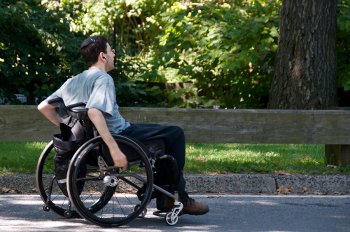
The World Health Organization (WHO) has published a…
Blog
Since 2015, every second Monday in February is International Epilepsy Day, an event that aims to educate people around the world about this neuronal disease that affects approximately 65 million people worldwide.
Epilepsy is a disease that affects the entire population, regardless of age, from before birth to people over 90 years of age. It is estimated to have a prevalence of 8 per 1,000 people.
It is a chronic brain syndrome of various causes, characterized by recurrent seizures due to an excessive discharge of nerve impulses by brain neurons, eventually associated with various clinical and para-clinical manifestations. Crises can be convulsive or non-convulsive. Not all people who suffer from an epileptic seizure are diagnosed with epilepsy. They are considered epileptic when they suffer at least two seizures, which are not always associated with the motor tremors of a seizure.
There is evidence that epileptic seizure is not a random event. They are often caused by factors such as lack of sleep, stress or flashing light among others. Convulsive threshold is a term used to indicate the amount of stimulus needed to cause a seizure.
It is for this reason that the Web Accessibility Guidelines, specifically Guideline 2.3, take into account this type of users and the consequences that can original bad practices in web design. The guideline referring to this topic is entitled "Epileptic attacks" and the text that summarizes it reads: "Do not design content if it is known that it could cause epileptic seizures.
The guideline contains two specific criteria to consider:
-Criterion 2.3.1 (Three scintillations or below the threshold: "web pages must not contain any element that scintillates more than three times per second or the scintillation must be below the general scintillation and scintillation thresholds red. (Level A) ".
Note: Because any content that does not meet this Compliance Criterion may interfere with the user's ability to use the entire page, all content on a web page (whether used to meet other compliance criteria as if no) must comply with this Conformity Criterion.
This question is also extended with criterion 2.3.2 entitled Three flashes, which states the following: "web pages must not contain any element that flashes more than three times per second. (Level AAA)".
How to act in the face of an epileptic seizure?
We take this post to give you some guidelines in case you are facing a seizure or seizure crisis. It must be acted as follows:
Do not tie the person suffering from the crisis.
Take off your glasses, if you wear them.
Loosen the buttons so that nothing presses on it. If he wears a tie, untie it.
Set aside anything that could hurt you.
As a general rule, do not put anything in your mouth.
Support him on one side, so that his airway is not blocked once he has stopped having seizures.
Cushion, if possible with a pillow, any blows that may occur.
Stay close to the victim and talk to them slowly.
Wait for the crisis to end. Remember that in most cases seizures subside within minutes.
Make sure the person is fully aware once the crisis is over. Ask him the name, the date, where he is, and where he will go next. Once you have regained your level of consciousness, it is advisable to remove your dental prosthesis, if you have one.
Call the emergency services (112):
If the crisis lasts more than five minutes.
If the person (or family members) does not know that he or she is having epilepsy, does not receive specific treatment, or this is the first time it has happened to him or her.
If recovery is very slow, if the person suffers a second attack or if they have difficulty breathing during or after the crisis.
If the victim is pregnant, has signs of any other illness or has been injured during seizures.
maria.cortes

The World Health Organization (WHO) has published a…

The World Health Organization (WHO) has published a…

The World Health Organization (WHO) has published a…
Segons l'informe publicat aquest passat Desembre per la International Telecommunication Union (ITU), la agència de les Nacions Unides especialitzada en informació i tecnologies de la…